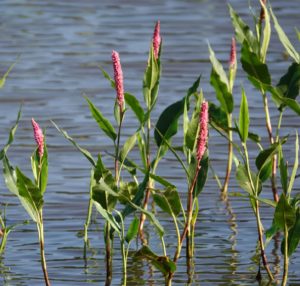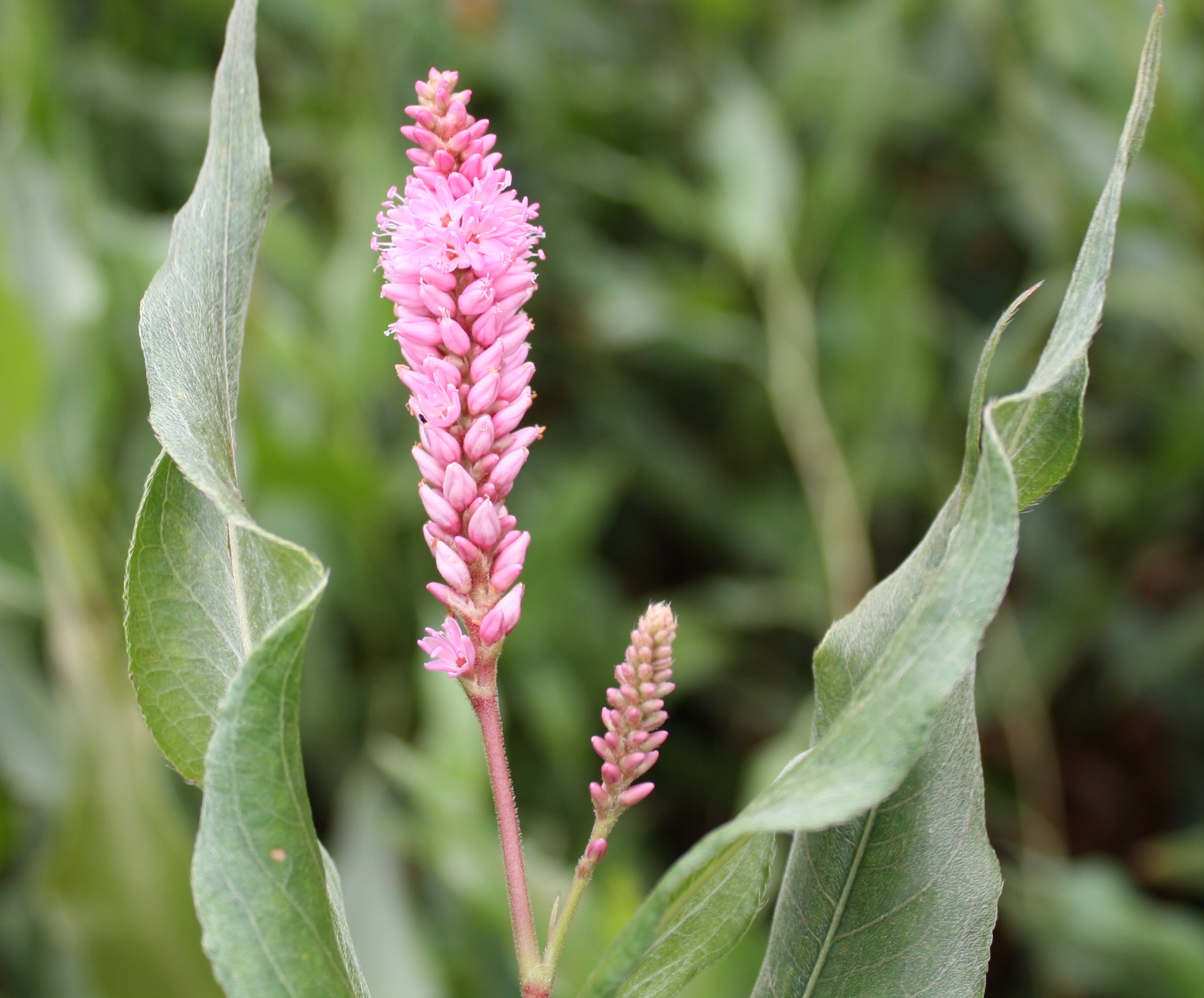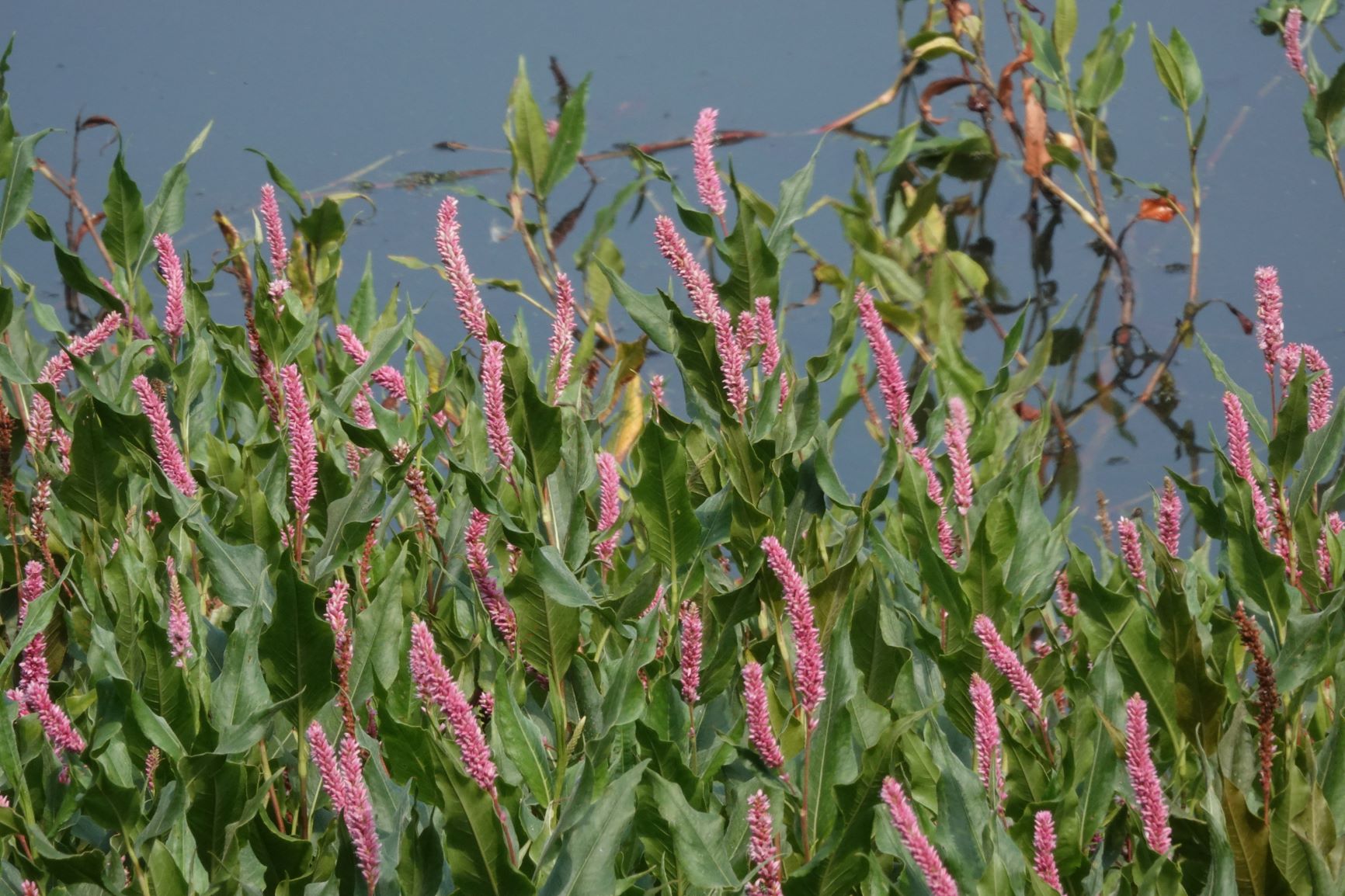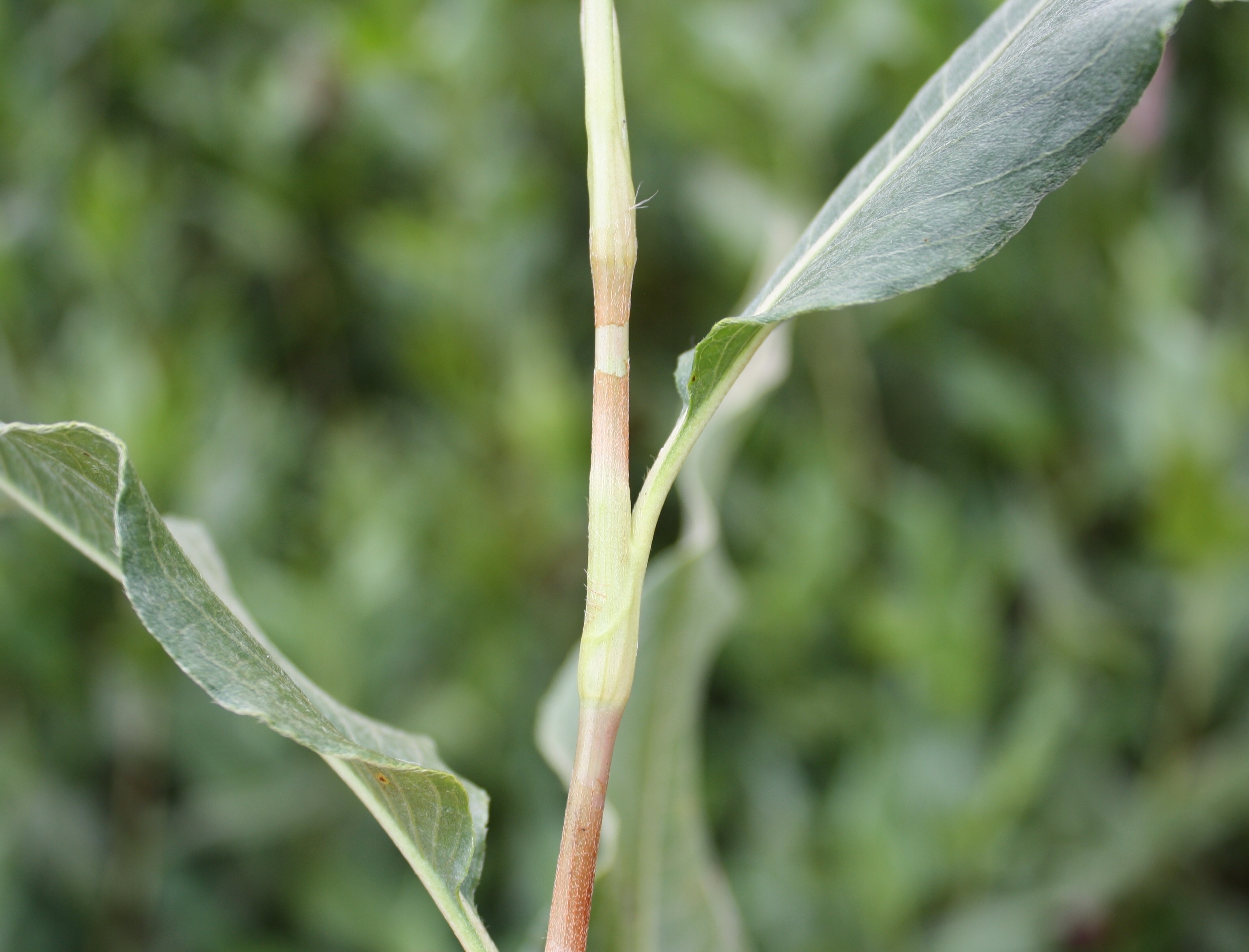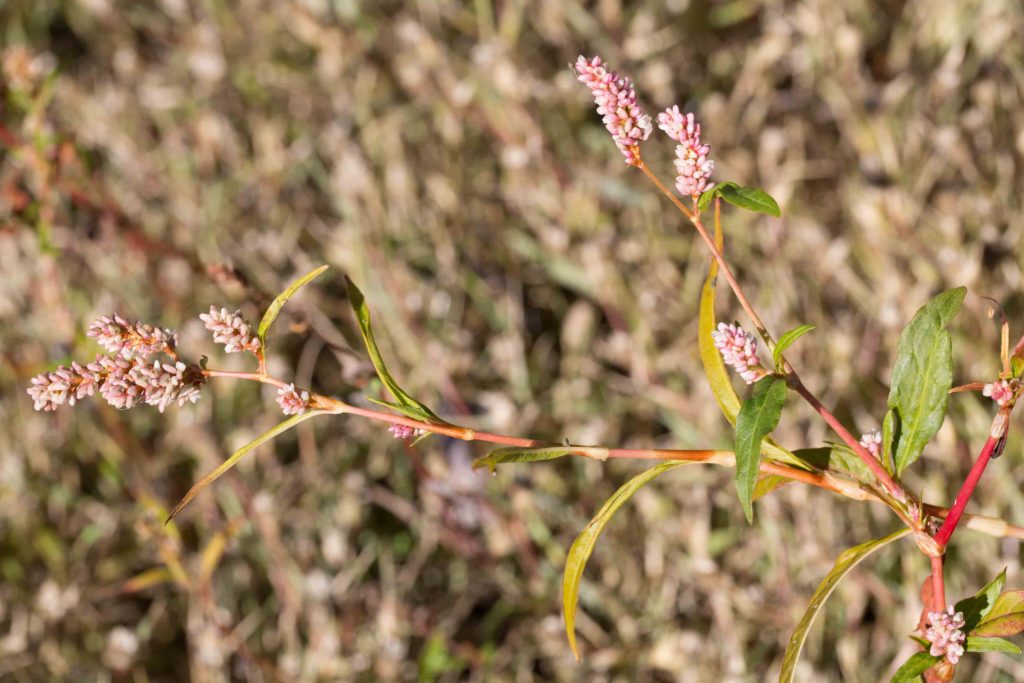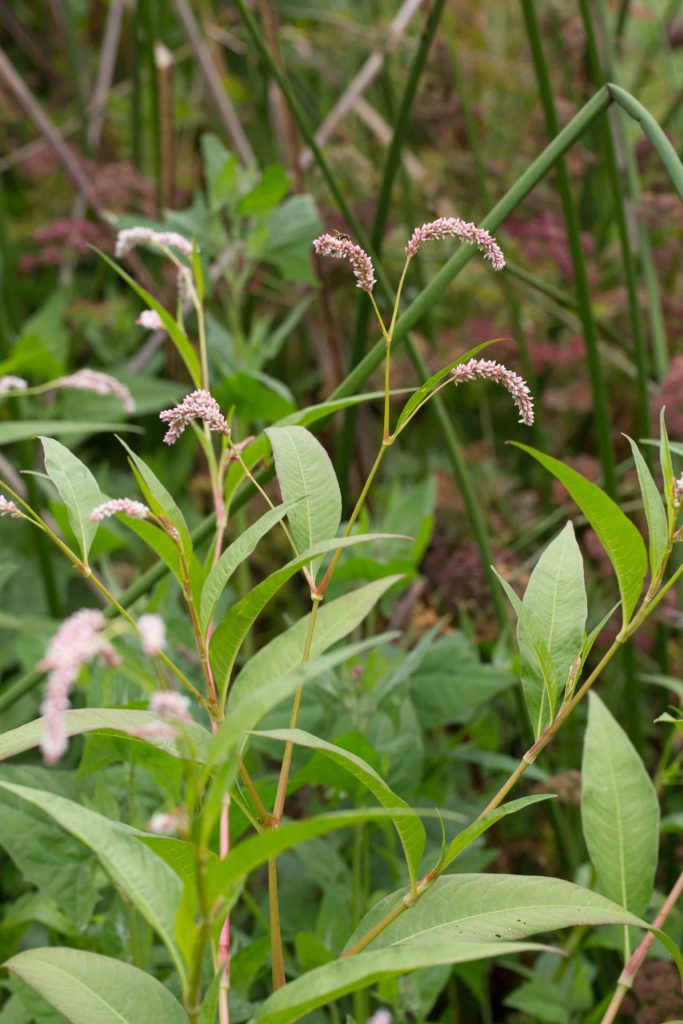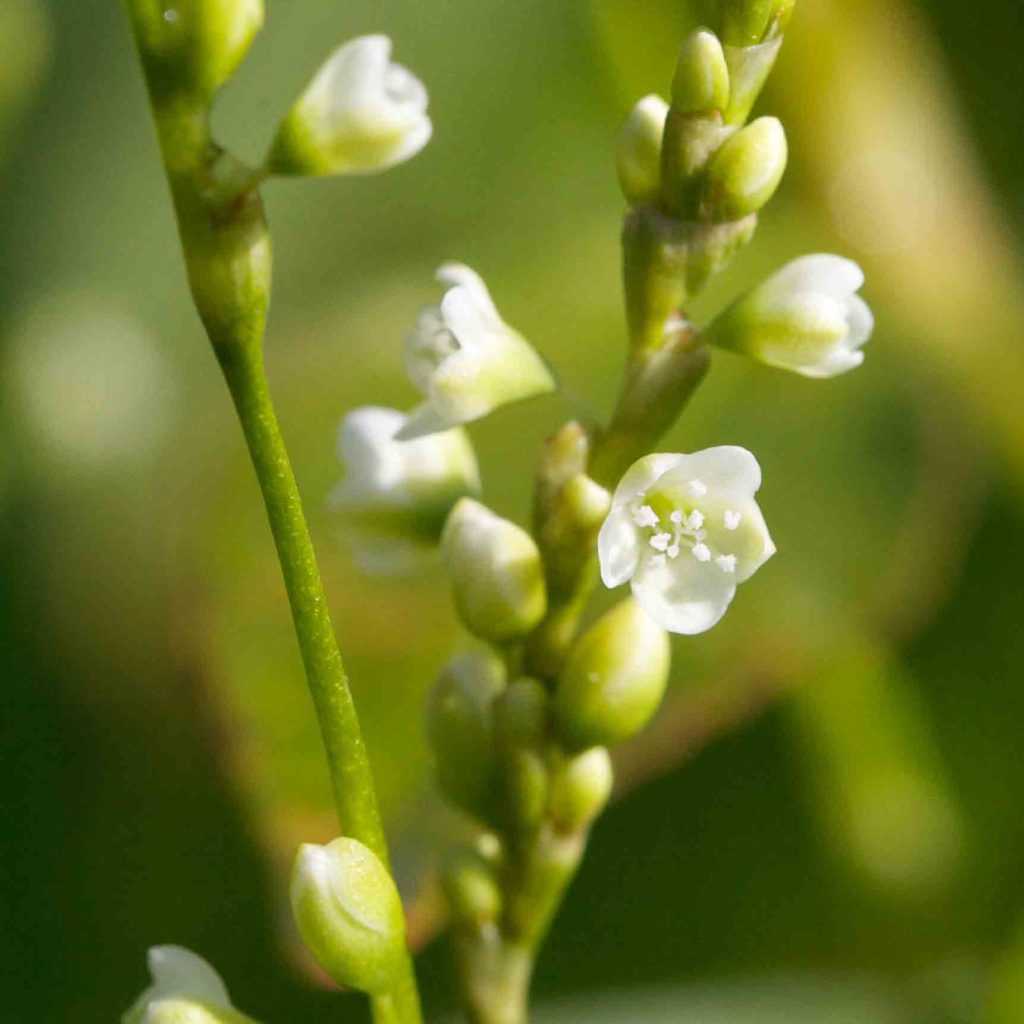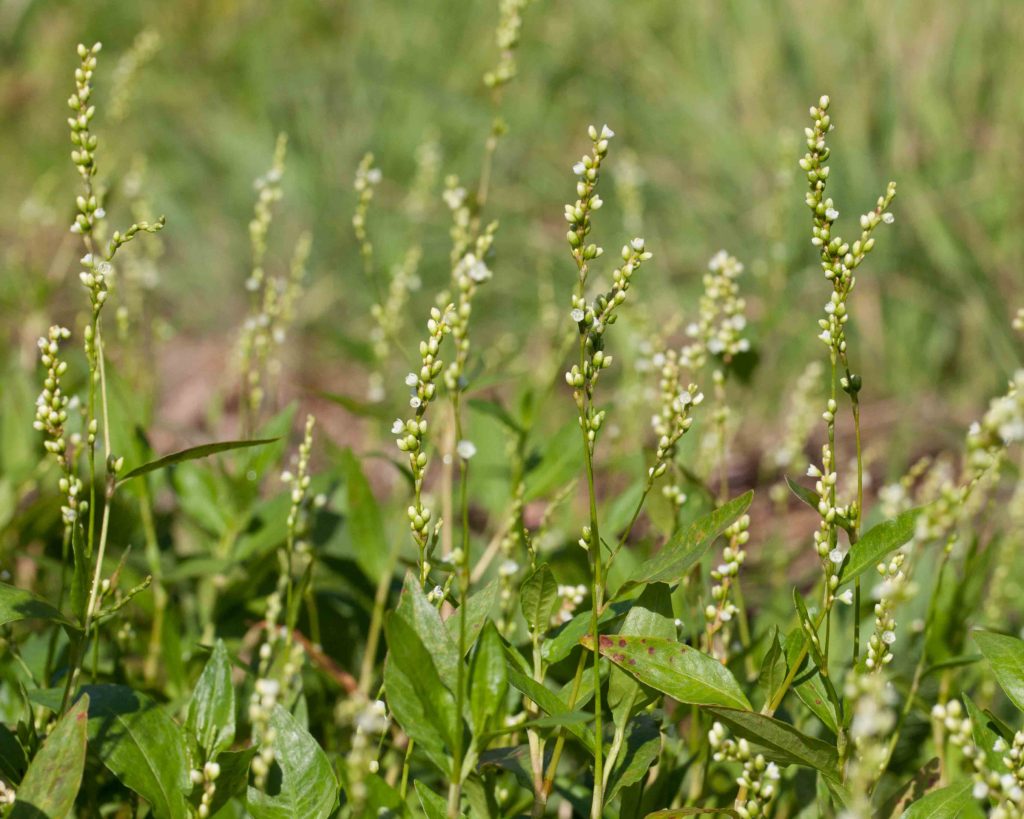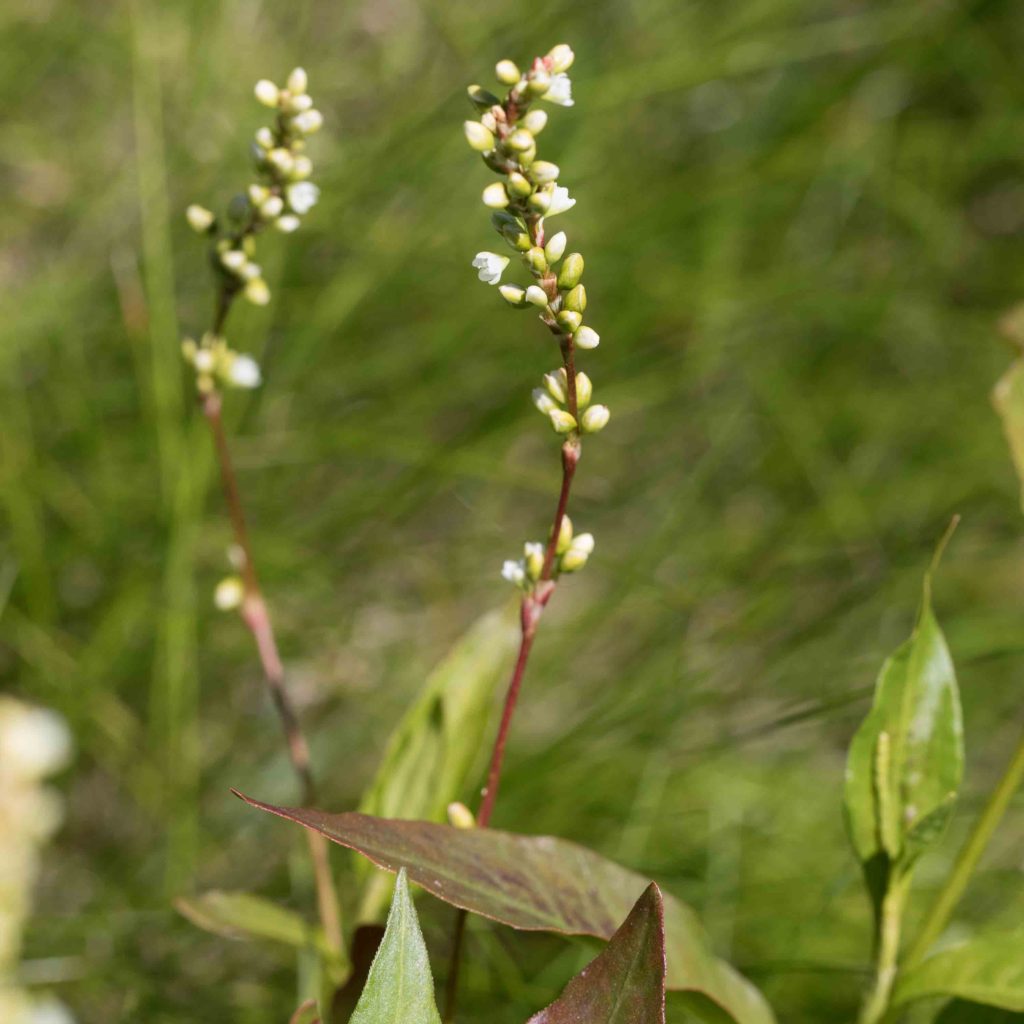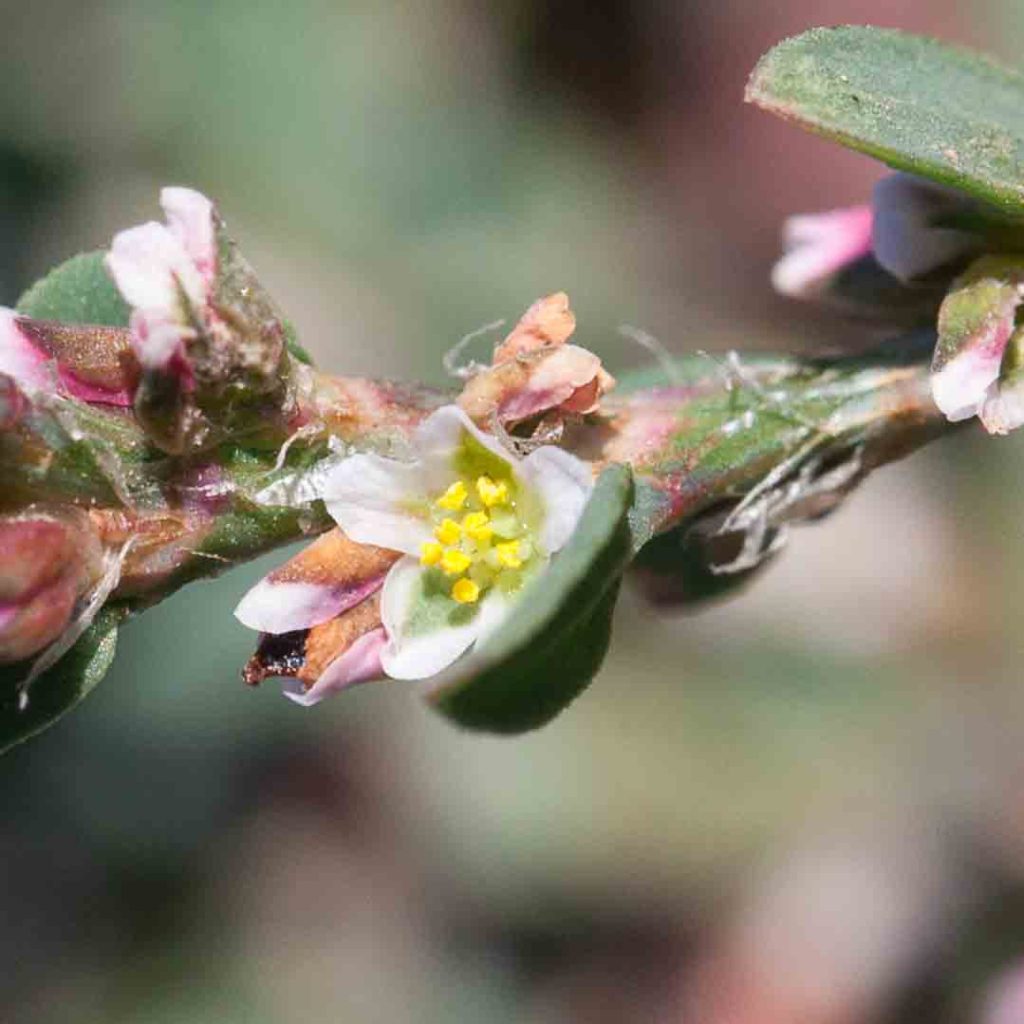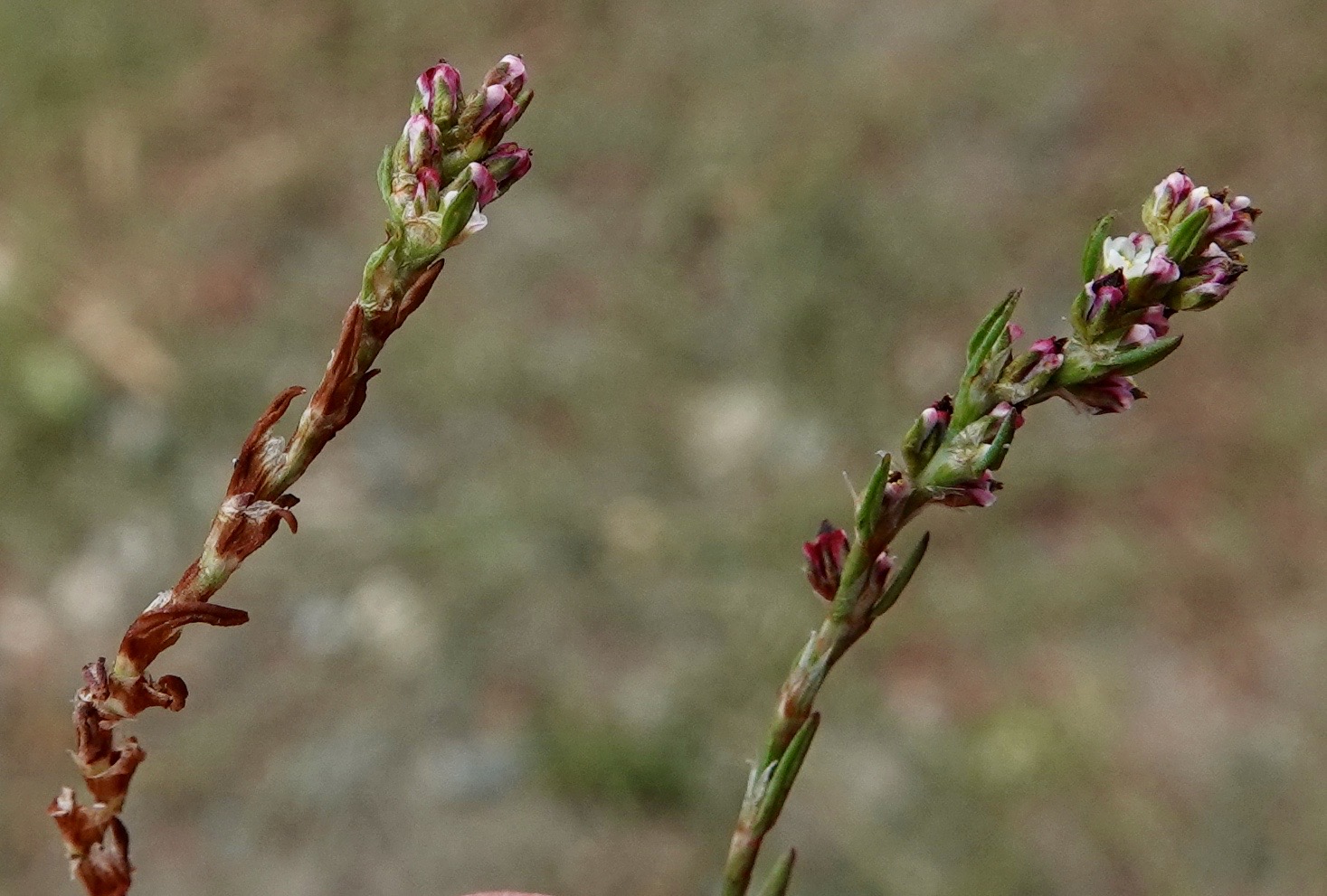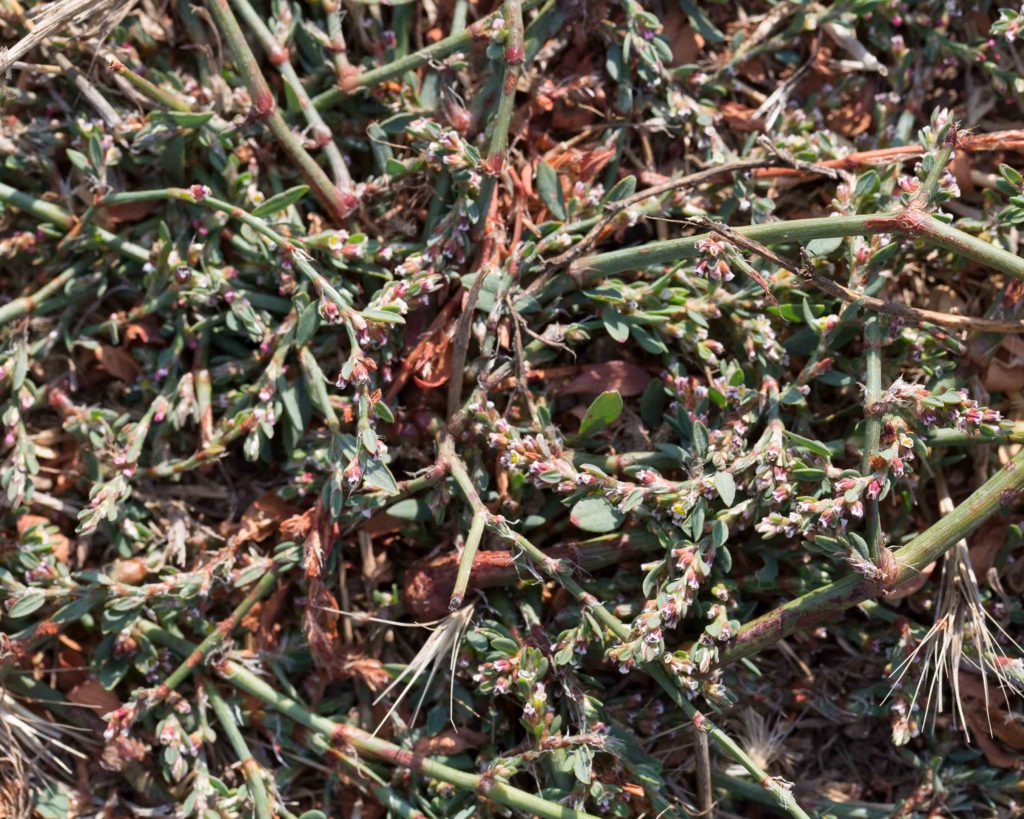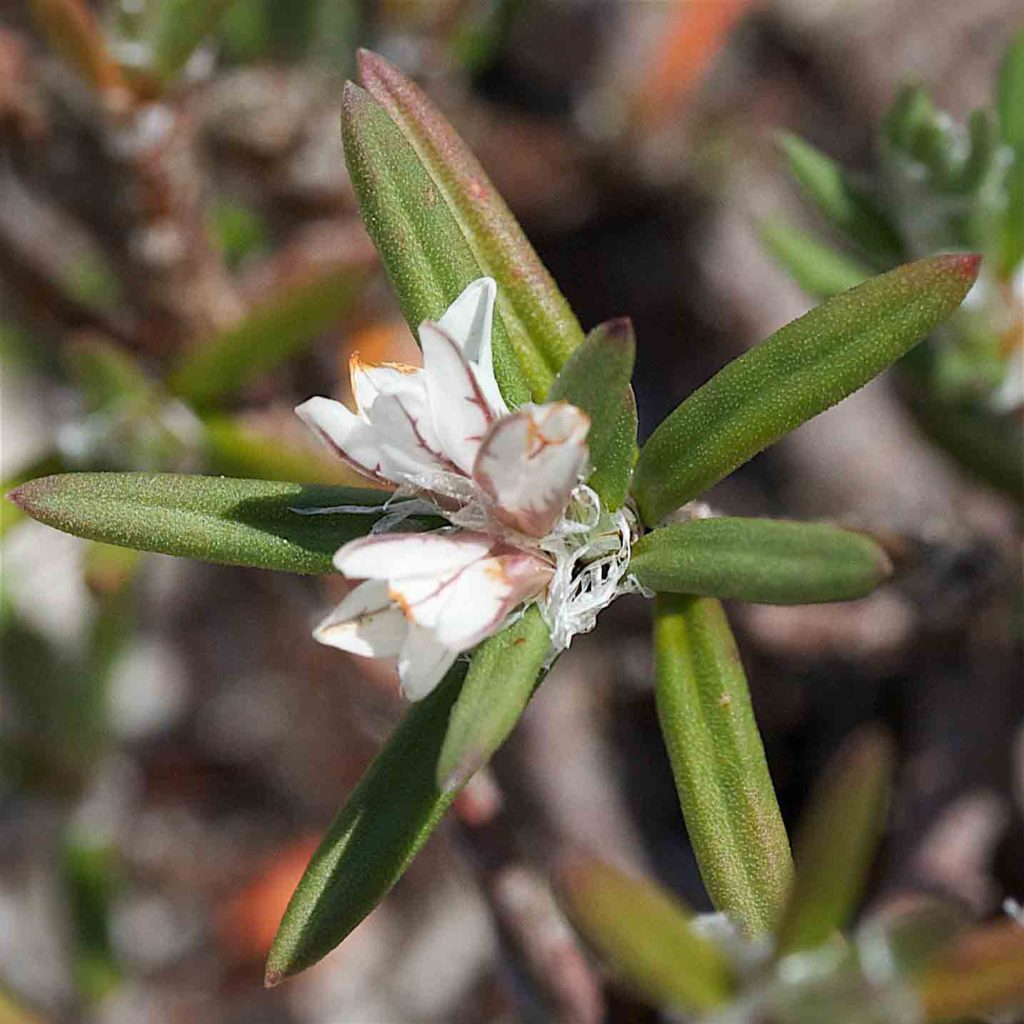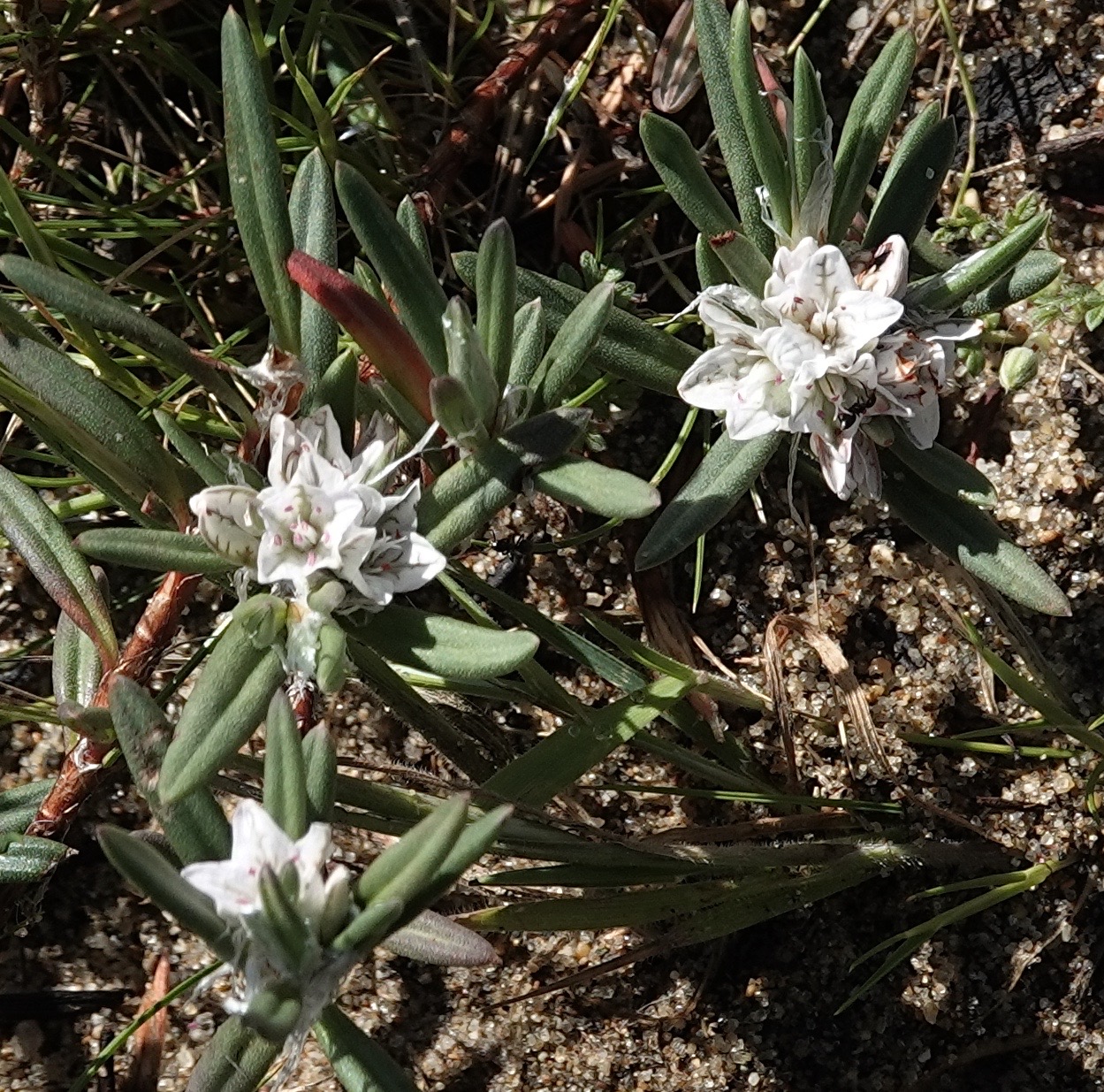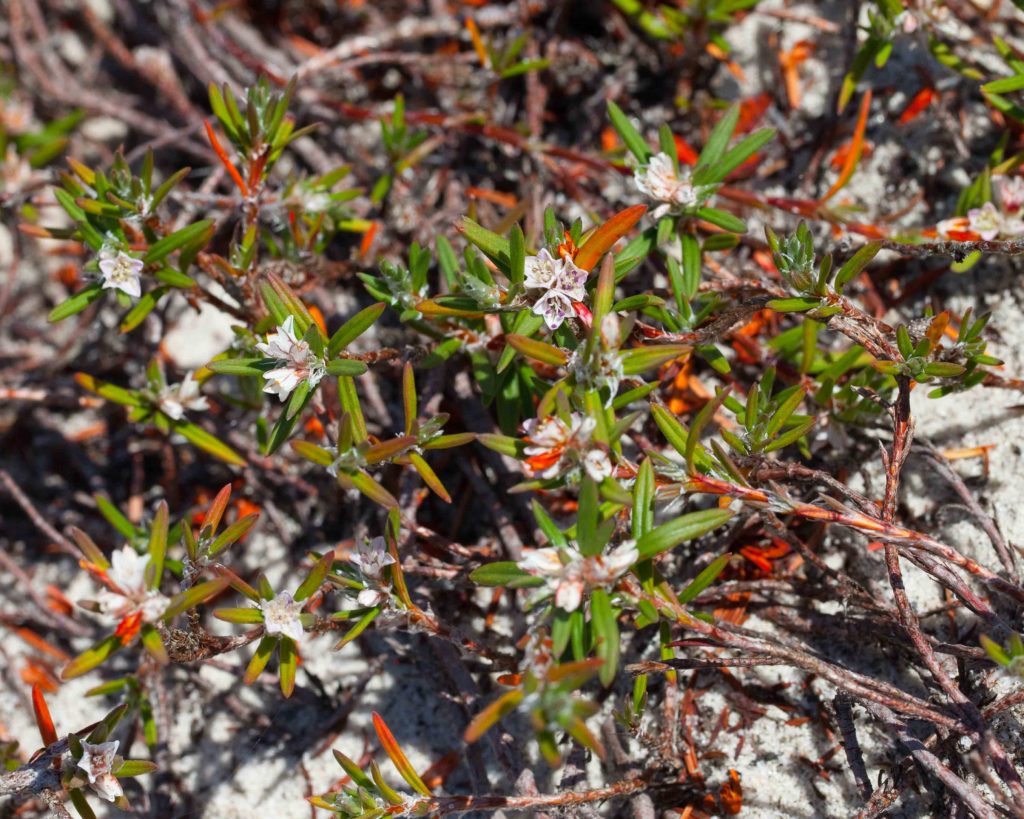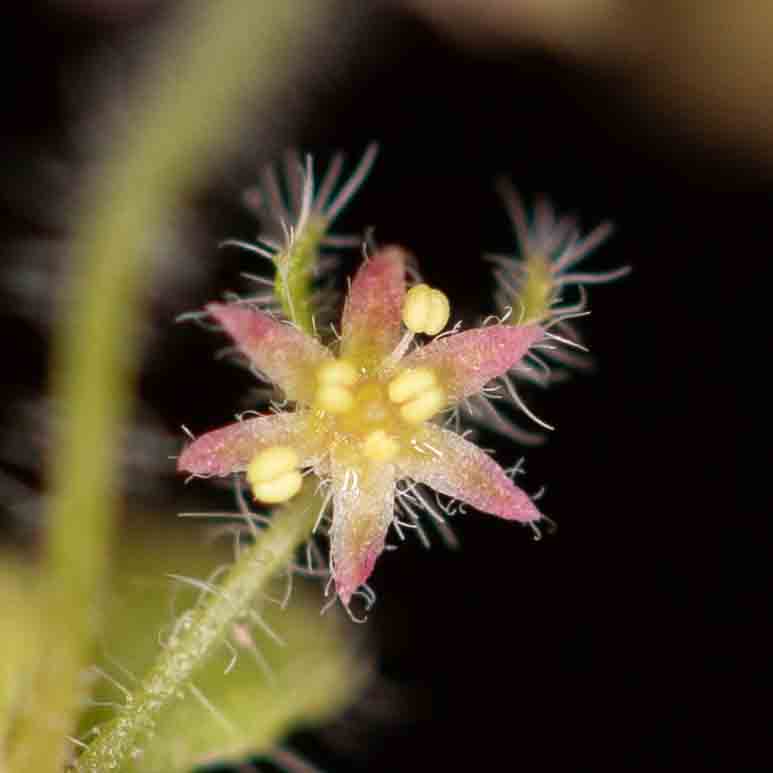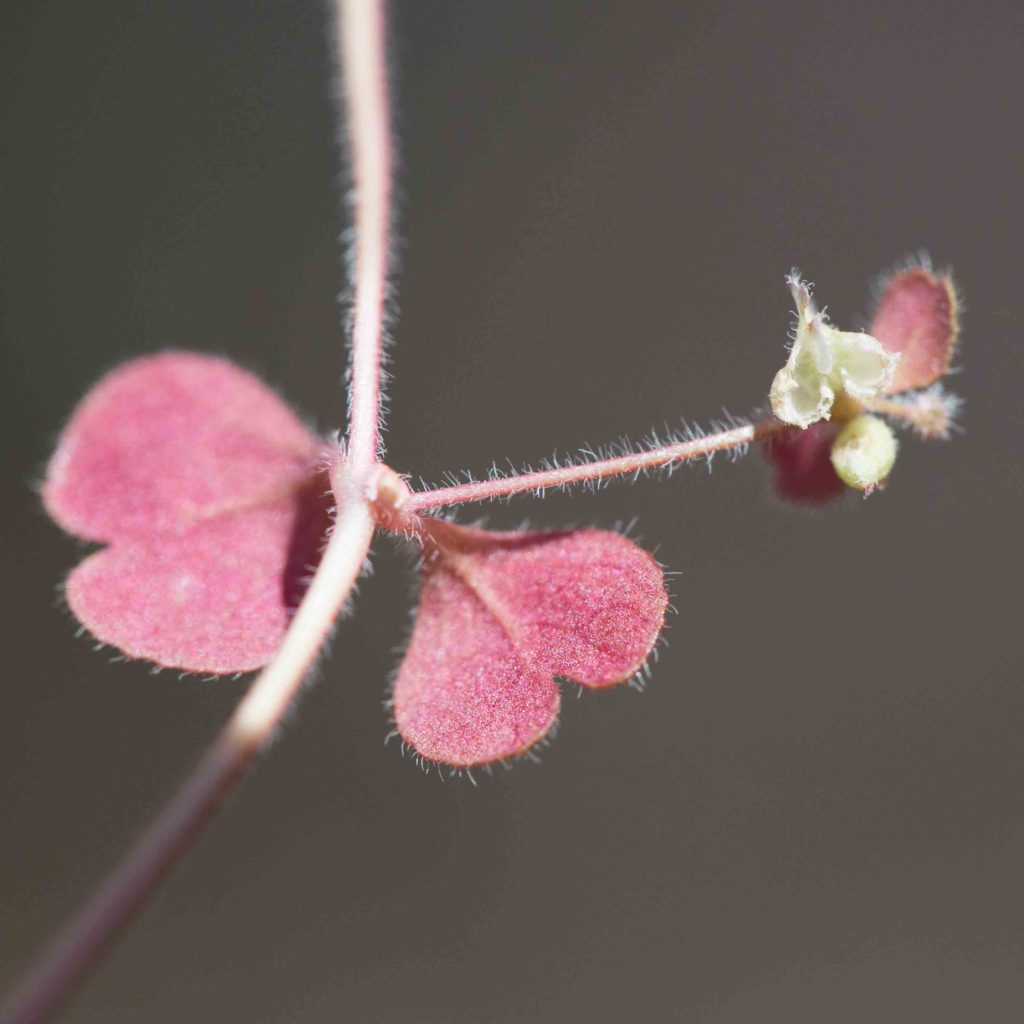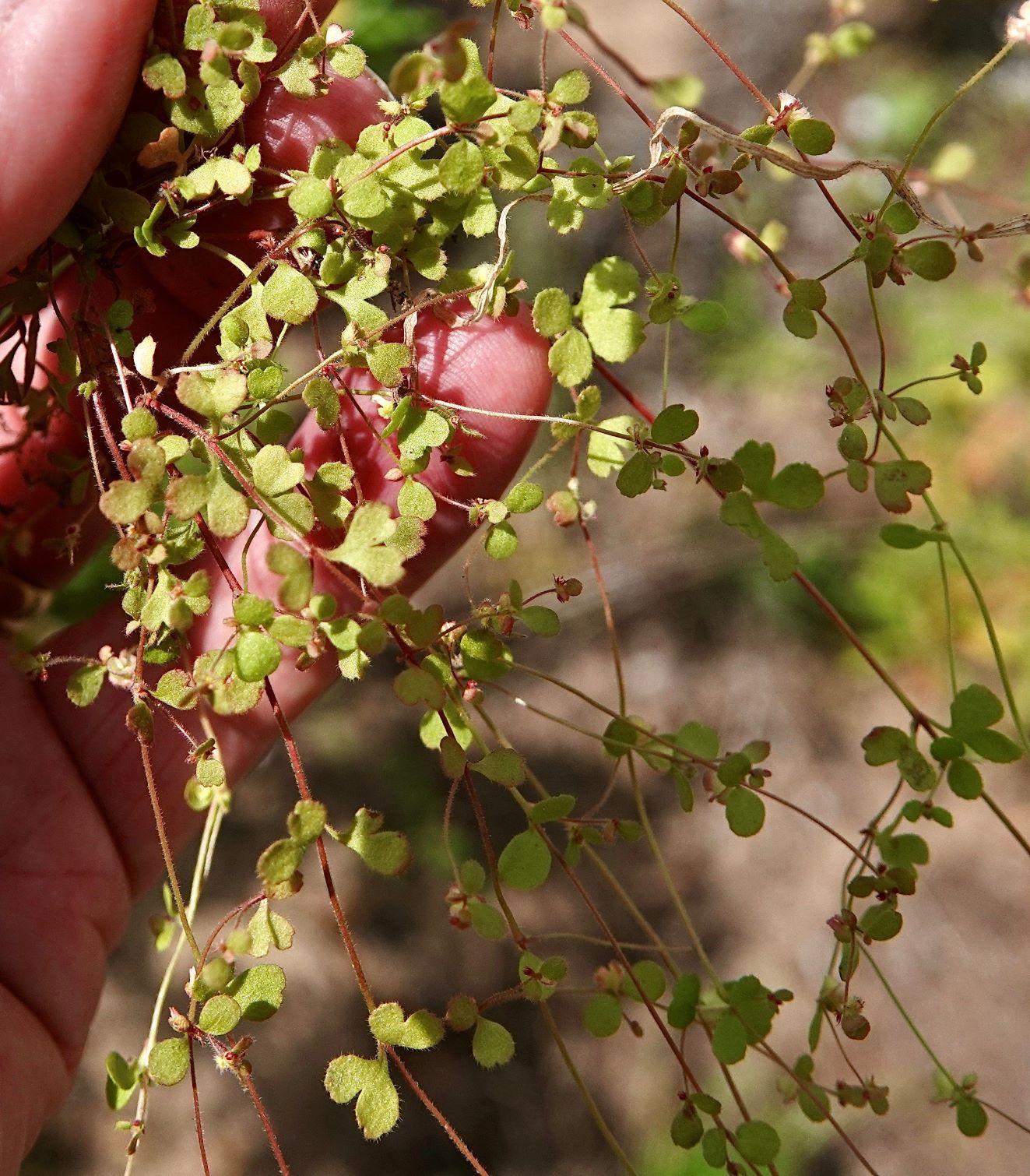Polygonaceae: Knotweed Family — Knotweeds and miscellaneous
Flowers in this family do not have separate petals and sepals. For plants like this, the term “perianth” is used to describe the flower (i.e. the calyx and the corolla together) and “perianth parts” to describe the individual elements.
Water Smartweed – Persicaria amphibia
Blooms:
June–Nov
Plant Height:
20–100 cm
Flower Size:
Large clusters
Origin:
Native
Habitat:
Shallow water, moist places
Notes:
This plant is amphibious, as suggested by the species name. Stems may creep, float or grow erect, rooting at nodes that come in contact with moist substrate. The stout stems are known to reach 3 m in aquatic plants. Leaves are lanceolate, ovate, arrow-shaped or lance-oblong, usually 2-15 cm. Flowers are in dense, terminal spikes (1-15 cm long) of many 5-lobed, pink, rose or red flowers. Sheaths (ocrea) are brown or tan, up to 5 cm, have no cilia and may be leaf-like distally. In ponds, marginal stands can expand noticeably during the summer, both upslope onto the land, and into deeper water. If water levels drop, these aquatic plants become terrestrial without missing a beat. Photos by CJH.
Willow Weed – Persicaria lapathifolia
Blooms:
June–Oct
Plant Height:
10–100 cm
Flower Size:
Medium cluster
Origin:
Native
Habitat:
Moist places
Notes:
This has a tall stem, that is glabrous, reddish, ascending to erect. Flowers are 4- or 5-lobed, green-white to pink. They are often nodding, in axillary or terminal spikes. Leaves are narrowly to broadly lanceolate, < 12 cm long with long, tapered, sharp tips. Leaves may have dark blotches on their surfaces. The stems have sheaths (ocrea), 4–24 mm long, brownish, glabrous or ciliate, but without noticeable bristles.
Dotted Smartweed – Persicaria punctata
Blooms:
June–Nov
Plant Height:
15–100 cm
Flower Size:
Large cluster
Origin:
Native
Habitat:
Low moist places
Notes:
This is common around pond margins, with ascending to erect stems. It has narrow, interrupted, 5–20 cm long clusters of tiny, 5-lobed, white, bell-shaped flowers. Leaves are lanceolate to lance-ovate or diamond-shaped, and punctate (with pitted glandular dots), hence the species’ scientific name. The tops of the sheaths (ocrea) have bristly hairs.
Common Knotweed – Polygonum aviculare subsp. depressum
Blooms:
May–Nov
Plant Height:
10–50 cm
Flower Size:
Very small
Origin:
Europe
Habitat:
Disturbed places
Notes:
This is a common noxious weed, that survives drought and appears to thrive even on compacted soils such as trails. It is low growing, often prostrate and forming small mats. The white flowers are tiny (3–5 mm). The leaves are bluish-green and appear slightly succulent. Note the fused stipules that form a sheath around the stem nodes. Photo #2 by CJH.
Dune / Beach Knotweed – Polygonum paronychia
Blooms:
Mar–Sept
Plant Height:
10–100 cm
Flower Size:
Small cluster
Origin:
Native
Habitat:
Coastal dunes
Notes:
The flowers are clustered in the leaf axils, colored from pink to white, with overlapping lobes. Leaves are cauline only, 1–2 cm, linear to lanceolate, and mainly clustered around the stem tips. Leaf margins are rolled under. Stems are reddish, and can be either prostrate or shrubby, sometimes rooting at the nodes. Photo #3 by CJH.
Woodland Threadstem / Fairy Mist – Pterostegia drymarioides
Blooms:
Mar–July
Plant Height:
Stem 10–40 cm
Flower Size:
Very small
Origin:
Native
Habitat:
Shady, sandy or gravelly places
Notes:
This is a prostrate or climbing plant, usually found in shaded areas or beneath other plants. The leaves are small (2 cm wide), distinctively heart-shaped, with a notch at the tip, opposite and either green or red. Stems and leaves are hairy. The perianth is tiny (< 2 mm) and star-like. It is yellow, pink or rose with 5 (occasionally 6) lobes. Photo #3 by CJH.
